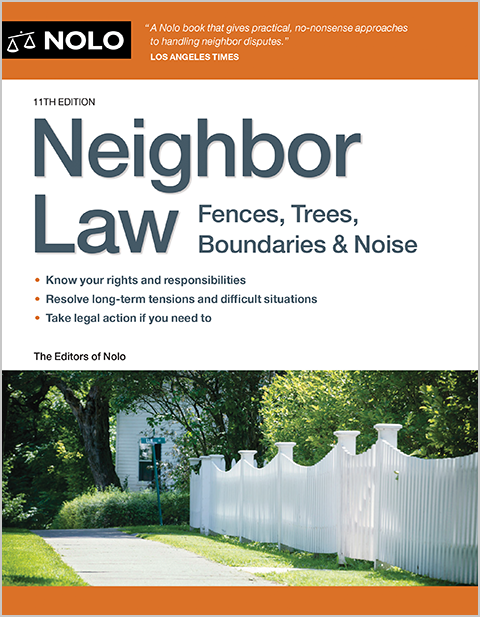Local ordinances and permitting requirements might give you grounds on which to block a neighbor's new construction.
When a neighbor wants to add a second story to their house, it raises inevitable concerns among other homeowners; particularly if it's in a neighborhood of mostly single-level homes. Questions might include:
- Will this addition will change the character of my neighborhood?
- Will the new second story shade my backyard?
- Will the shade kill my garden and lawn, and
- Given all of the above, can I stop my neighbor from building this second-story addition?
We'll offer some insights and possible steps to take here.
Find Out What Stage the Home-Addition Project Is At
This type of development can proceed quickly. Therefore, your best bet is to promptly determine the status of any development application, including applications for building and land use permits, filed by your neighbor. To determine whether applications have been filed, and if so, the status of those applications, contact both your local planning department and building department.
When you do, have your neighbor's address available, since the application might not be under their name.
It is possible that your neighbor will need to obtain both a land use permit and a building permit. Land use permits are often required when owners seek to change the use of their land (for example, from single-family residential to multifamily), or construct a new commercial or multifamily project on their property. You can typically determine whether a land use permit is necessary by reviewing the local zoning ordinance. If the ordinance is unclear, you can seek clarification from the local planning department or a land use attorney.
Regardless of whether a land use permit is required or not, your neighbor will certainly need to obtain a building permit. Building permits are required to ensure public health, safety, and general welfare. A landowner must ordinarily obtain a building permit in order to construct, enlarge, convert, add onto, or demolish a structure. And the owner must obtain the permit before, not after, beginning construction.
As part of the building permit application process, city or county staff will review the application by for compliance with not only the building code, but also the zoning ordinance (sometimes called a "development code"). Others who might review the application include the road master, fire marshal, local law enforcement agency, and the city or county engineer.
If the planned addition is prohibited by the building code or zoning ordinance (or any other code or ordinance), the permit may be denied. In some situations, the applicant may be able to apply for a "variance," which allows the development to proceed despite some inconsistencies with a code or ordinance.
Whether a proposed second story addition is in compliance with all codes and ordinances will require a detailed review of both the proposed addition and applicable codes and ordinances. Some common issues, though, that a person adding on to a house might encounter include:
- Height restrictions. Many residential zones limit the height of a new building to between 28 and 35 feet. These restrictions exist primarily for fire and building safety. However, height restrictions are also provided for aesthetic reasons, like preserving mountain or ocean views. If your neighbor's proposed second-story addition will violate the applicable height restriction, you should alert the building department. Your neighbor might be able to redesign the addition to comply, but by making sure the height restriction is enforced, you at least can minimize the impact the second story will have on your property.
- Solar access. Solar access or solar setbacks are intended to make sure existing development continues to receive sunlight without obstruction from new buildings and additions. If it exists, a solar access provision will normally be found in your local zoning ordinance and state something like:
"The purpose of this solar access provision is to provide as much solar access as feasible during the winter solar heating hours to existing or potential buildings by requiring all new structures to be constructed as far south on their lots as is necessary and feasible."
If your local zoning ordinance includes such a provision, make sure the proposed second story addition complies with the stated rule. Typically, there are exceptions written into solar access provisions to allow development in cases where strict compliance with the provision would make development impractical. So again, this provision might not stop development of the second story, but by making sure the solar access provision is enforced to the extent possible, you can minimize its impact on you.
- Setbacks. A "setback" requires that a building be a certain distance from a property line. In residential zones, there might be a front yard setback (such as 20 feet), side yard setback (perhaps five feet), and backyard setback (such as 15 feet). If a second story addition does not change the building's footprint, the setback codes are not likely to be an issue for your neighbor. However, if the addition will require enlarging the house's footprint, you will want to confirm that the addition complies with applicable setbacks.
- Lot coverage. In many single family residential zones, lot coverage requirements minimize the amount of space the house can cover on a lot. For example, on lots that are greater than 5,000 square feet, a local jurisdiction might allow the house to cover 35% of the lot. Similar to the setbacks, if the second story addition will enlarge the house footprint, you should confirm that it does not violate the applicable lot coverage requirement. If it does, your neighbor might have to redesign the addition.
- Historic districts. If you live in an older neighborhood, you and your neighbor might be located in a historic district. If so, your neighbor will have an additional set of standards to comply with when remodeling or adding on to the property. In short, any addition must be consistent with the historic character of the existing building and neighborhood. This can add significant expense and complexity to any building project. If you are in a historic district, and your neighbor's second-story addition is not consistent with development in the neighborhood, you might be in a good position to argue that the addition permits should be denied.
Find Out Whether Your Community or HOA Rules Restrict Such Building
In addition to building code and zoning ordinance provisions that might provide arguments for why your neighbor's second story addition should not be approved, you could also look into whether any private agreements limit development. For example, is your property located in a subdivision with Covenants, Conditions, and Restrictions ("CC&Rs") that prohibit second stories? Be sure to review any CC&Rs that apply in your neighborhood.
Find Out Whether Private Agreements Restrict Such Building
In addition to CC&Rs, other private agreements might limit development on your neighbor's property. For example, a previous owner of your house might have, after agreement with the owner of your neighbor's property, created and recorded an easement that protects your right to sunlight or a view, by limiting development on your neighbor's property. If you are unaware of any such agreement, you might need to go down to the County Clerk or County Recorder to search the public records. A title company or real estate attorney can help with this type of search.
Get Legal Help
A real estate or land use attorney should be able to help you work through the possible arguments you might have and properly challenge your neighbor's second story addition. Act promptly to protect your rights. Missing a deadline could bar you from being able to challenge the addition, even if the addition will violate the law.
Talk to a Lawyer
Need a lawyer? Start here.
How it Works
- Briefly tell us about your case
- Provide your contact information
- Choose attorneys to contact you
- Briefly tell us about your case
- Provide your contact information
- Choose attorneys to contact you


